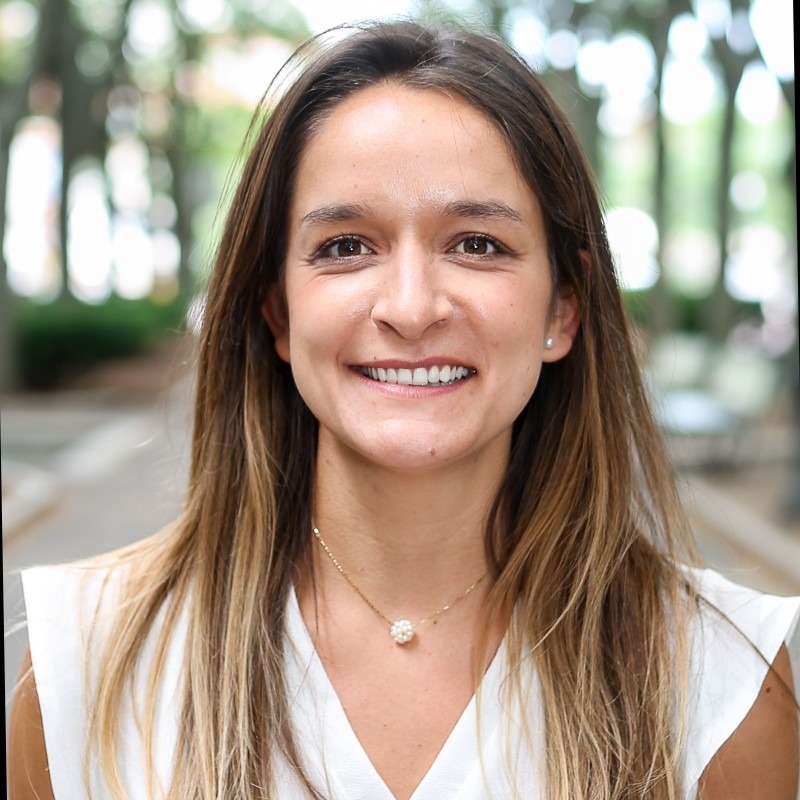“My body, my choice!” screamed thousands of women in unison as they waved their emblematic green handkerchiefs in Plaza de Bolivar turning Bogotá into the most recent battlefield of women’s fight towards reproductive autonomy. Colombian feminist collectives are following the example of their Mexican and Argentinian peers in demanding the full legalization of abortion[1].
Abortion was partially decriminalized in Colombia in 2006 in large part due to civil society groups[2]. An estimated 350,000 women in Colombia have aborted before the procedure was decriminalized[3].
Currently, Colombia is one of the few countries in the world where there is no trimester limit to abort[4], so long as it can be framed in one of the three decriminalized causes[5]:
- When the embryo or fetus has malformations incompatible with life outside the womb.
- If the mother’s life or health (mental and physical) is in danger.
- If the pregnancy is a result of rape, incest, or forced insemination.
Based on this seemingly ample legal framework, and the fact that Colombia boasts universal healthcare coverage[6], it would be reasonable to assume that accessing an abortion in Colombia is comparable to accessing other types of medical procedures. However, women, especially impoverished and rural ones, keep facing significant barriers when demanding an abortion7.
There is a significant discrepancy between what the Constitutional Court has ruled and the healthcare sector’s response to guarantee women’s right to terminate unwanted pregnancies. This is perhaps why according to conservative estimates 114,000[7] women and as many as 400,000 [8]turn to clandestine abortion centers each year, putting in danger their health and life.
Much of the discrepancy starts in medical and nursing schools that refuse to teach students the different procedures necessary to guarantee the court’s mandate[9]. One of Bogota’s most renowned medical schools positions the field of medicine as inherently “pro-life” and cites university autonomy as one of the primary reasons why students are not taught in theory nor in practice how to perform abortions[10].
This institutional position is reflected in the fact that more than 50% of legal charges brought against women who abort are done by medical personnel[11], in explicit violation of patient privacy and a perversion of the role of doctors and nurses into prosecutors rather than champions of their patients’ rights.
In another major medical school, students are “spared” having to learn about abortion as it is considered too controversial and thus is exclusively reserved for obstetrics and gynecology residents[12]. This is done despite World Health Organization (WHO) guidelines and the Ministry of Health’s protocols which position most abortions as procedures simple enough to be carried out by nurses and doctors with proper training[13].
In universities where students are taught the necessary skills to carry out abortions, they are only taught dilation and curettage[14], a procedure that the WHO does not recommend in most situations. This in part explains why 8 out of 10 abortions carried out in Colombia are done using this method[15], putting women at unnecessary risk and discomfort.
A study carried out in 2018 that evaluated four medical school curricula found that none of them met the minimal criteria for effectively teaching both the theoretical or practical skills needed to carry out abortions safely and legally in Colombia[16]. The curricula of medical and nursing schools in Colombia seem to be completely discretionary to each university thereby prioritizing their institutional rights to teaching autonomy over women’s right to reproductive autonomy.
Academic autonomy is defended in the constitution with the intention of extending to universities the possibility of openly debating ideas, even if these might be in direct opposition to the political context. The notion of academic autonomy cannot, however, be used as a way of justifying an undemocratic stance that effectively limits women’s access to reproductive autonomy. Universities have a social obligation of teaching essential workers the skills needed to guarantee the rights defined by the constitutional court, following a democratic process.
It is important that the abortion debate in Colombia contemplates practical measures to ensure that medical and nursing schools include abortion as part of their curriculum. One way to achieve this would be for the Ministry of Education to demand that universities interested in bestowing the title of doctor or nurse must include both theoretical and practical components in their curriculum. Though this option has been contemplated in the past, both Ministries of Health and Education have shied away from formulating legal frameworks around abortion as it is seen as risky on virtually all sides of the political spectrum[17].
With limited public policy options in the short term, it becomes necessary for civil society groups to find mechanisms to pressure universities into aligning with the current legal framework. An alternative is to issue a ranking of universities based on how conducive these are to guaranteeing basic health rights, starting with reproductive autonomy.
This would have the dual purpose of sparking public debate and giving prospective students elements beyond academic reputation to inform their choice of university. The ranking could press students who are considering enrolling in universities, to disregard universities that explicitly overlook women’s rights and court rulings. In a country where most young people support the legalization of abortion, academic institutions would be compelled to align their values with those of the students they need to attract[18]. Healthcare institutions could further pressure universities by hiring alumni from medical and nursing schools with comprehensive reproductive health curricula.
Colombia’s incoherence between what is ruled and what is implemented demonstrates significant state weaknesses in materializing the rule of law. It ought to be the responsibility of the state to enforce the laws and public policies that it formulates, especially when these come from the highest court in the country. Due to this inability, it is up to civil society groups to continue carrying the burden of defending women’s right to abort. In parallel, feminist collectives should conceptualize a multiple-pronged strategy where rights are further advanced both in the legal framework and in practical learning of the procedure.
Works Cited
Así Vamos en Salud. (2021, April 20). Aseguramiento – Georeferenciado. Indicadores en salud normatividad derechos. Retrieved January 2, 2022, from https://www.asivamosensalud.org/indicadores/aseguramiento/aseguramiento-georeferenciado
Cifras y Conceptos. (2021, April). Percepciones Sobre la Interrupción Voluntaria del Embarazo en Colombia. Retrieved January 2, 2022, from https://despenalizaciondelaborto.org.co/wp-content/uploads/2021/06/Modulo-Mesa-por-la-vida-17.06.2021-converted-min.pdf
Cruz Cañon, L. N. (2020, March 30). Facultades de Medicina, reprobadas en Interrupción Voluntaria del Embarazo. ELESPECTADOR.COM. Retrieved January 2, 2022, from https://www.elespectador.com/salud/facultades-de-medicina-reprobadas-en-interrupcion-voluntaria-del-embarazo-article-865163/
Gonzalez Velez, A. C. (n.d.). Hoja informativa sobre la criminalización del aborto en … Retrieved January 2, 2022, from https://despenalizaciondelaborto.org.co/wp-content/uploads/2021/09/2021-08_HojaInformativa_v4-1-1.pdf
Guttmacher Institute . (n.d.). Datos sobre el aborto en América Latina. Retrieved January 2, 2022, from https://www.guttmacher.org/sites/default/files/pdfs/pubs/IB_AWW-Latin-America-SP.pdf
Hernandez, L. J. (2018). RESUMEN REVISIÓN del plan curricular, los microcurrículos, las estrategias pedagógicas y el desarrollo de competencias en Interrupción Voluntaria del Embarazo (IVE) en cuatro facultades de Medicina. Retrieved January 2, 2022, from https://despenalizaciondelaborto.org.co/wp-content/uploads/2020/03/14.-Resumen_revision_del_plan_curricular.pdf
Los Angeles Times. (2021, September 13). En toda América Latina, se están flexibilizando Las restricciones Al Aborto. Los Angeles Times. Retrieved January 2, 2022, from https://www.latimes.com/espanol/internacional/articulo/2021-09-13/across-latin-america-abortion-restrictions-are-being-loosened
Ministerio de Salud y Protección Social. (n.d.). Abecé – minsalud.gov.co. ABECE. Retrieved January 2, 2022, from https://minsalud.gov.co/sites/rid/lists/bibliotecadigital/ride/vs/pp/abc-maternidad-elegida.pdf
Parrado, R. (n.d.). Atención integral de la Interrupción Voluntaria del Embarazo (IVE) en el primer nivel de complejidad . Documento técnico para prestadores de servicios de salud. Retrieved January 2, 2022, from https://www.minsalud.gov.co/sites/rid/Lists/BibliotecaDigital/RIDE/VS/PP/SM-IVE-Atencion-baja-complejidad.pdf
Redacción El Tiempo. (2000, July 6). Primera Condena por aborto. El Tiempo. Retrieved January 2, 2022, from https://www.eltiempo.com/archivo/documento/MAM-1220087
Revista Semana. (2020, August 29). La Reglamentación del aborto: ¿en qué está y qué viene ahora? Semana.com Últimas Noticias de Colombia y el Mundo. Retrieved January 2, 2022, from https://www.semana.com/nacion/articulo/en-que-quedara-la-reglamentacion-del-aborto/646702/
Roa, M. (2021, November 24). Will Colombia seize this opportunity to decriminalize abortion? IPPF. Retrieved January 2, 2022, from https://www.ippf.org/blogs/will-colombia-seize-opportunity-decriminalize-abortion
Rubio, M. (2015, September 23). Vista de El Mito de los 400 mil abortos en Colombia. Revistas Universidad . Retrieved January 2, 2022, from https://revistas.uexternado.edu.co/index.php/ecoins/article/view/4313/5307
Sociedad Colombiana de Anestesiologia y Reanimación. (2019, November 5). Resolución Que Reglamentará el aborto en colombia inquieta a gremios médicos. S.C.A.R.E. Retrieved January 2, 2022, from https://scare.org.co/noticias/resolucion-que-reglamentara-el-aborto-en-colombia-inquieta-a-gremios-medicos/
Unintended pregnancy and induced abortion in Colombia. Guttmacher Institute. (2016, April 6). Retrieved January 2, 2022, from https://www.guttmacher.org/fact-sheet/unintended-pregnancy-and-induced-abortion-colombia
Waisman, V. (n.d.). C-355/2006: Extractos de la Sentencia de la Corte constitucional que liberalizó el aborto en colombia.: Women’s link. C-355/2006: Extractos de la sentencia de la Corte Constitucional que liberalizó el aborto en Colombia. | Women’s Link. Retrieved January 2, 2022, from https://www.womenslinkworldwide.org/informate/publicaciones/c-355-2006-extractos-de-la-sentencia-de-la-corte-constitucional-que-liberalizo-el-aborto-en-colombia-1
[1] Los Angeles Times. (2021, September 13). En toda América Latina, se están flexibilizando Las restricciones Al Aborto. Los Angeles Times. Retrieved January 2, 2022, from https://www.latimes.com/espanol/internacional/articulo/2021-09-13/across-latin-america-abortion-restrictions-are-being-loosened
[2] Waisman, V. (n.d.). C-355/2006: Extractos de la Sentencia de la Corte constitucional que liberalizó el aborto en colombia.: Women’s link. C-355/2006: Extractos de la sentencia de la Corte Constitucional que liberalizó el aborto en Colombia. | Women’s Link. Retrieved January 2, 2022, from https://www.womenslinkworldwide.org/informate/publicaciones/c-355-2006-extractos-de-la-sentencia-de-la-corte-constitucional-que-liberalizo-el-aborto-en-colombia-1
[3] Redacción El Tiempo. (2000, July 6). Primera Condena por aborto. El Tiempo. Retrieved January 2, 2022, from https://www.eltiempo.com/archivo/documento/MAM-1220087
[4] Ministerio de Salud y Protección Social. (n.d.). Abecé – minsalud.gov.co. ABECE. Retrieved January 2, 2022, from https://minsalud.gov.co/sites/rid/lists/bibliotecadigital/ride/vs/pp/abc-maternidad-elegida.pdf
[5] Ministerio de Salud y Protección Social. (n.d.). Abecé – minsalud.gov.co. ABECE. Retrieved January 2, 2022, from https://minsalud.gov.co/sites/rid/lists/bibliotecadigital/ride/vs/pp/abc-maternidad-elegida.pdf
[6] Así Vamos en Salud. (2021, April 20). Aseguramiento – Georeferenciado. Indicadores en salud normatividad derechos. Retrieved January 2, 2022, from https://www.asivamosensalud.org/indicadores/aseguramiento/aseguramiento-georeferenciado
7Roa, M. (2021, November 24). Will Colombia seize this opportunity to decriminalize abortion? IPPF. Retrieved January 2, 2022, from https://www.ippf.org/blogs/will-colombia-seize-opportunity-decriminalize-abortion
[7] Rubio, M. (2015, September 23). Vista de El Mito de los 400 mil abortos en Colombia. Revistas Universidad . Retrieved January 2, 2022, from https://revistas.uexternado.edu.co/index.php/ecoins/article/view/4313/5307
[8] Guttmacher Institute . (n.d.). Datos sobre el aborto en América Latina. Retrieved January 2, 2022, from https://www.guttmacher.org/sites/default/files/pdfs/pubs/IB_AWW-Latin-America-SP.pdf
[9] Cruz Cañon, L. N. (2020, March 30). Facultades de Medicina, reprobadas en Interrupción Voluntaria del Embarazo. ELESPECTADOR.COM. Retrieved January 2, 2022, from https://www.elespectador.com/salud/facultades-de-medicina-reprobadas-en-interrupcion-voluntaria-del-embarazo-article-865163/
[10] Author conducted an interview with a directive in one of Colombia’s most prominent medical schools. The interviee asked to remain anonymous.
[11] Gonzalez Velez, A. C. (n.d.). Hoja informativa sobre la criminalización del aborto en … Retrieved January 2, 2022, from https://despenalizaciondelaborto.org.co/wp-content/uploads/2021/09/2021-08_HojaInformativa_v4-1-1.pdf
[12] Author conducted an interview with a directive in one of Colombia’s most prominent medical schools. The interviee asked to remain anonymous.
[13] Parrado, R. (n.d.). Atención integral de la Interrupción Voluntaria del Embarazo (IVE) en el primer nivel de complejidad . Documento técnico para prestadores de servicios de salud. Retrieved January 2, 2022, from https://www.minsalud.gov.co/sites/rid/Lists/BibliotecaDigital/RIDE/VS/PP/SM-IVE-Atencion-baja-complejidad.pdf
[14] Unintended pregnancy and induced abortion in Colombia. Guttmacher Institute. (2016, April 6). Retrieved January 2, 2022, from https://www.guttmacher.org/fact-sheet/unintended-pregnancy-and-induced-abortion-colombia
[15] Unintended pregnancy and induced abortion in Colombia. Guttmacher Institute. (2016, April 6). Retrieved January 2, 2022, from https://www.guttmacher.org/fact-sheet/unintended-pregnancy-and-induced-abortion-colombia
[16] Hernandez, L. J. (2018). RESUMEN REVISIÓN del plan curricular, los microcurrículos, las estrategias pedagógicas y el desarrollo de competencias en Interrupción Voluntaria del Embarazo (IVE) en cuatro facultades de Medicina. Retrieved January 2, 2022, from https://despenalizaciondelaborto.org.co/wp-content/uploads/2020/03/14.-Resumen_revision_del_plan_curricular.pdf
[17] Revista Semana. (2020, August 29). La Reglamentación del aborto: ¿en qué está y qué viene ahora? Semana.com Últimas Noticias de Colombia y el Mundo. Retrieved January 2, 2022, from https://www.semana.com/nacion/articulo/en-que-quedara-la-reglamentacion-del-aborto/646702/
[18] Cifras y Conceptos. (2021, April). Percepciones Sobre la Interrupción Voluntaria del Embarazo en Colombia. Retrieved January 2, 2022, from https://despenalizaciondelaborto.org.co/wp-content/uploads/2021/06/Modulo-Mesa-por-la-vida-17.06.2021-converted-min.pdf

Amelia Rey Bonilla worked for the past 10 years in public health and served as Director of Collective Health of Bogotá championing reproductive rights and leading the single largest reduction in teen pregnancy in the history of the city. She is currently a candidate for the Mid Career Master’s in Public Administration and a Mason Fellow at Harvard’s Kennedy School of Government.
Twitter: @areybonilla
